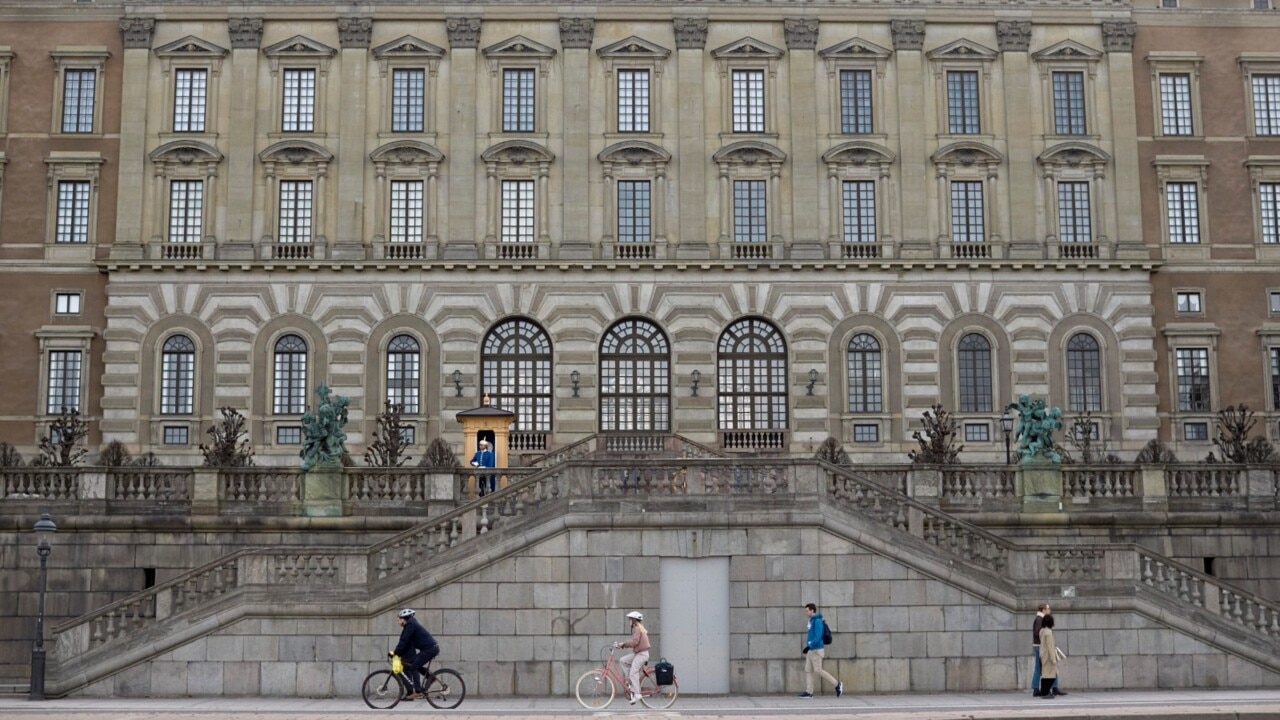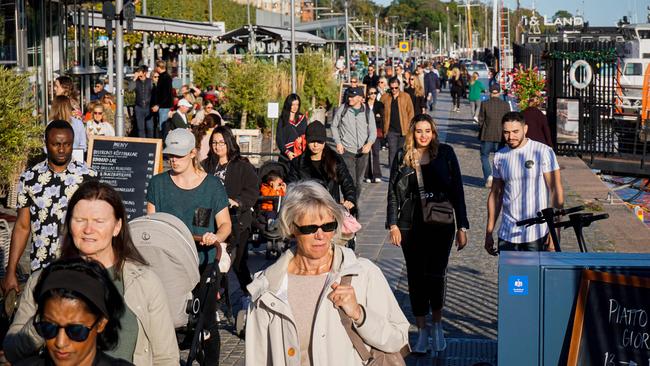Coronavirus: What it would take for herd immunity to kill pandemic
Wider community protection could be closer than we think but even with a vaccine there are barriers to herd immunity.

The concept of herd immunity is at the heart of global vaccination efforts and discussions about next steps in fighting the COVID-19 pandemic and bringing back economies.
For the pandemic to stop, the coronavirus has to run out of susceptible hosts to infect. Herd immunity occurs when enough people in a population develop an immune response, either through previous infection or vaccination, so the virus can’t spread easily and even those who aren’t immune have protection.
To reach herd immunity for COVID-19, public-health authorities estimate that around 60 per cent to 70 per cent of a given population would need to develop an immune response to the virus. Some epidemiologists and mathematicians now say herd effects might start to kick in before that point, at perhaps closer to 50 per cent, suggesting potential protection could be achieved sooner.
Still, infectious-disease experts adamantly warn against the notion of trying to reach herd immunity to the coronavirus without a vaccine, as the costs on human life would be staggering and it likely wouldn’t happen soon, if at all.
Even with a vaccine, there will still be barriers to achieving herd immunity. “It’s a continuous process,” said Saad Omer, director of the Yale Institute for Global Health. “You could start seeing [an effect] before that threshold, but the other issue is there might still be outbreaks at a smaller level.
“It’s not like when herd immunity is achieved, we’re not going to have COVID-19,” he said.
Estimates vary widely for where the herd-immunity threshold lies because researchers use a variety of statistical techniques to account for differences in individuals’ likelihood of spreading the virus.
The herd-immunity threshold is mathematically dependent on the infectiousness of the virus, or how many individuals each infected person goes on to infect — called the basic reproductive number, or R0. Scientists calculate the herd threshold using that number and an equation formulated almost 100 years ago by two pioneering Scottish epidemiologists.
Measles, for example, is extremely contagious. It has a basic reproductive number between 12 and 18 and a herd threshold of 90 per cent to 95 per cent. For SARS-CoV-2, the basic reproductive number is estimated at around 2.5 to 3, implying a herd threshold of 60 per cent to 70 per cent.
But the classic equation makes an assumption — that everyone is equally susceptible to infection and has the same chance of bumping into every other person, like molecules of gas in a bag, said Justin Lessler, associate professor of epidemiology at Johns Hopkins Bloomberg School of Public Health.
“Which of course is ridiculous. It’s not how the world works,” Dr. Lessler said. The equation gives you a good target for vaccine coverage, but it doesn’t capture the dynamics of an epidemic moving naturally from person to person, he said.

In reality, people live in clusters, interacting only with certain individuals. Age, job, social network and even individual biological responses to infection all affect a person’s place in the spidery web of disease transmission.
Essential workers, for instance, are more likely to get infected than people able to limit interactions with others. If those who are more likely to transmit the virus developed immunity early on, whether through infection or vaccine, it would be possible to start seeing a reduction in transmission earlier, epidemiologists say.
Reflecting these real-world effects in disease models can shift the estimated herd immunity boundary. One group of researchers estimated that threshold for COVID-19 could be as low as 10 per cent to 20 per cent though many epidemiologists say that is unlikely. Other modellers have estimated it at around 40 per cent to 50 per cent. Christopher Murray, director of the Institute for Health Metrics and Evaluation at the University of Washington, said his group estimates the herd-immunity threshold at between 50 per cent and 80 per cent.

If lower estimates for herd immunity are correct, then governments should consider policies to shield the elderly and other at-risk groups from the virus while relaxing restrictions on everybody else, said Paul McKeigue, professor of genetic epidemiology and statistical genetics at the University of Edinburgh, in Scotland.
But most infectious-disease experts strongly advise against that, as it isn’t clear how governments would shield more vulnerable people from the easily spread pathogen. Those in lower-risk groups can become seriously ill and, on rare occasions, die as a result of the disease. Doctors are just beginning to understand long-term health effects.
“If we’re talking about letting the disease run its course [and] infect large numbers of people, essentially what we’re saying is the public-health system has failed to do its job,” said Nadia Abuelezam, an infectious-disease epidemiologist at Boston College. “We’ll have a lot of death, and we’ll have a lot of morbidity.”
Communities, including some neighbourhoods in New York, and even individual families that have been hard-hit by the virus likely do have an elevated level of protection. “But it’s a dangerous thing to base your strategy on,” said Dr. Omer. “There’s still enough tinder to be burned.”
Most places aren’t likely near the point where everyone is protected, even as confirmed global infections surpass 30 million and deaths top 950,000.
And even if subpopulations do develop a level of protective immunity, the virus can easily jump to unexposed pockets, especially if restrictions are relaxed and people potentially start to socialise and travel more, epidemiologists say.

In places where cases have slowed, behavioural changes such as mask-wearing and social-distancing are the more likely explanations for reduced transmission, said Natalie Dean, a biostatistician who specialises in infectious diseases at the University of Florida.
Sweden, for instance, which didn’t implement an aggressive lockdown, still has bans on gatherings of more than 50 people, among other restrictions and voluntary guidelines.
A preliminary survey from the Swedish Public Health Agency in May showed that only 6.7 per cent of people from ages 20 to 64 and 2.7 per cent of those from ages 65 to 95 had antibodies. Sweden also has the highest per capita death rate of its Nordic neighbours.
“At this point, I would not bank on herd immunity in most areas on this planet,” Florian Krammer, a professor in vaccinology at the Icahn School of Medicine at Mount Sinai in New York, said during a panel recently at the online Aspen Ideas health festival.

Another wrinkle: Infectious-disease experts aren’t sure how long immunity to the virus might last, or how often re-infections might occur. Past exposure to other coronaviruses might provide some protection, though any effects of that are unclear.
For diseases such as measles, mumps and polio, herd immunity was achieved through vaccination campaigns. Many say the Food and Drug Administration could authorise a COVID-19 vaccine by year-end, but the rollout will likely be staggered well into 2021, incrementally reducing the susceptibility of the population and building up resistance.
And even when one does potentially become available, there are growing concerns that some Americans won’t want it.
How much of the population needs to get vaccinated to help achieve herd immunity also depends on a potential vaccine’s effectiveness. The FDA has said it would authorise a vaccine with 50 per cent efficacy or better. Some vaccines could require more than one dose to build up a robust response.
The coronavirus is unlikely to disappear completely, public-health experts say. More likely, there will be outbreaks in vulnerable pockets that authorities will work to control, similar to measles, or it could circulate similarly to influenza.
But public-health precautions such as mask-wearing can beat back the virus and, coupled with widely administered vaccines, safely help a level of normalcy return, health authorities say.
“With a combination of a good vaccine together with good public-health measures, we may be able to put this coronavirus outbreak behind us,” Anthony Fauci, director of the National Institute of Allergy and Infectious Diseases, told The Wall Street Journal’s CEO Council on Wednesday. “There will be an end to this, and we will be able to get back to normal.”
The Wall St Journal







To join the conversation, please log in. Don't have an account? Register
Join the conversation, you are commenting as Logout